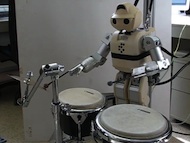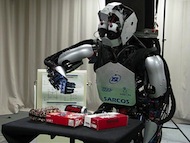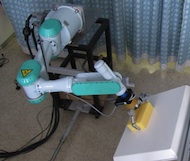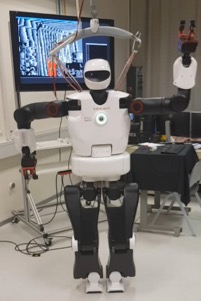
• Human motion capture and motion transfer to humanoid robots
• Imitation learning
• Learning by autonomous exploration and reinforcement learning
• Humanoid robot vision
• Recognition of human activities
• Integration of sensorimotor learning and higher-level reasoning
• Lifelong robot learning
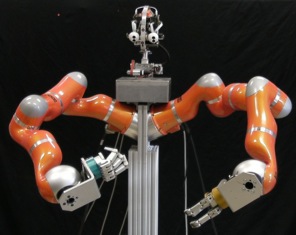
In the area of robot perception we study approaches that combine active vision and manipulation with the processing of visual information and other sensing modalities including force. By active sensing we can bring in additional information that can be exploited to autonomously learn new sensory representations and object affordances, which would be very difficult or even impossible with static perceptual systems. Our approach is closely related to the early development of sensorimotor processing in children. We are also interested in the development of humanlike visual systems to improve the sensing capabilities of our robots.
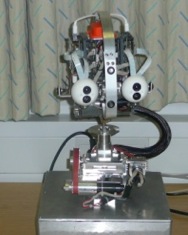
Another important line of our research is the integration of low-level sensorimotor learning with the concept of object-action complexes, which have the ability to represent and reason about low-level (sensorimotor) processes as well as high-level (symbolic) information. They can therefore be used to join the perception-action space of an agent with its planning-reasoning space. Bridging the gap between low-level control knowledge and high-level abstract reasoning is one of the fundamental concerns of autonomous robotics.
Besides in these key areas, the members of HCR conduct research in a number of related fields including kinematics, motor control, execution of collaborative behaviors (both human-robot and robot-robot), where there exists physical contact between agents, modeling of biological systems, visual tracking, object recognition and other areas of robot vision.
HCR is part of the Department of Automatics, Biocybernetics and Robotics at Jožef Stefan Institute.

